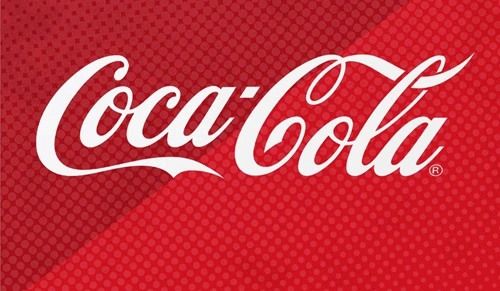Coca-Cola, one of the world’s most recognizable brands, has been a leader in the global beverage industry for over a century. Known for its flagship cola drink, the Coca-Cola Company has expanded its portfolio to include a variety of beverages, from sparkling drinks and water to juices, teas, and energy drinks. Operating in over 200 countries, Coca-Cola’s extensive reach, strong brand equity, and commitment to innovation have made it a household name. However, in a rapidly evolving market marked by shifting consumer preferences and growing health consciousness, Coca-Cola faces several challenges and opportunities. Here is a comprehensive SWOT analysis of Coca-Cola, along with insights into its current market position and future outlook.

Strengths
1. Iconic Brand and Strong Global Presence: Coca-Cola’s brand is one of the most valuable and widely recognized in the world. It represents not only a product but also a culture and lifestyle, which has helped it build an emotional connection with consumers globally. With operations in over 200 countries, Coca-Cola has a presence that few brands can match. This extensive reach gives it unparalleled market access and allows it to tap into diverse demographic and geographic segments.
2. Diverse Product Portfolio: Although Coca-Cola is primarily known for its cola beverages, it has successfully diversified its product portfolio to cater to a broad range of consumer tastes and preferences. The company offers a wide variety of beverages, including Dasani (water), Minute Maid (juice), Fanta, Sprite, Powerade (sports drinks), and more recently, plant-based beverages and zero-sugar options. This diversity helps Coca-Cola mitigate risks associated with changing consumer preferences and reduces dependence on any single product line.
3. Robust Distribution Network: Coca-Cola has an extensive distribution network that allows its products to reach even the most remote areas. The company has developed strong relationships with bottlers, suppliers, and retail partners, enabling efficient distribution across various channels, including supermarkets, convenience stores, restaurants, and vending machines. Coca-Cola’s reach in rural and urban markets alike ensures that its products are readily available to consumers worldwide.
4. Financial Strength and Consistent Profitability: Coca-Cola’s strong financial position, marked by high revenues and consistent profitability, enables it to make strategic investments in marketing, innovation, and acquisitions. The company’s financial stability allows it to weather economic downturns and continue expanding its portfolio through acquisitions and product development. Coca-Cola’s dividend payments and share buyback programs have also contributed to its reputation as a financially strong company, attracting long-term investors.
5. Commitment to Marketing and Brand Loyalty: Coca-Cola has long been known for its innovative marketing campaigns and memorable advertisements. Iconic campaigns such as “Open Happiness” and “Taste the Feeling” have helped Coca-Cola connect with consumers on an emotional level. This commitment to brand-building has translated into strong customer loyalty, ensuring that Coca-Cola remains a preferred brand for generations. Its marketing approach, which emphasizes lifestyle and enjoyment, has allowed Coca-Cola to maintain its appeal despite changing trends.
Weaknesses
1. Heavy Dependence on Carbonated Drinks: Although Coca-Cola has diversified its product range, a significant portion of its revenue still comes from carbonated soft drinks, including Coca-Cola, Diet Coke, Sprite, and Fanta. This reliance on sugary beverages exposes Coca-Cola to risks associated with shifting consumer preferences toward healthier options. As governments and health organizations continue to raise concerns about sugar consumption, Coca-Cola’s reliance on soft drinks could impact its future growth if it does not pivot adequately to healthier options.
2. Environmental Impact and Sustainability Challenges: Coca-Cola has faced criticism over its environmental impact, particularly its use of plastic bottles and water resources. Plastic waste has become a growing global concern, and Coca-Cola’s widespread use of single-use plastics has attracted scrutiny from environmental organizations. Additionally, the company’s water usage has raised concerns, especially in regions facing water scarcity. These sustainability issues can tarnish Coca-Cola’s reputation if not addressed proactively.
3. Dependence on Bottling Partners: Coca-Cola relies on an extensive network of independent bottling partners to produce and distribute its products. While this strategy has enabled scalability, it also limits Coca-Cola’s control over certain aspects of the production process. Quality control issues or operational inefficiencies on the part of bottling partners can impact Coca-Cola’s brand reputation. Any disruptions or disagreements with bottlers can also affect Coca-Cola’s supply chain and distribution efficiency.
4. High Exposure to Foreign Exchange Risks: Coca-Cola operates in over 200 countries, making it highly exposed to foreign exchange fluctuations. Changes in currency exchange rates can impact Coca-Cola’s revenue and profitability, particularly in regions with volatile currencies. Although the company implements hedging strategies to mitigate these risks, currency fluctuations remain a concern given its global reach and the unpredictability of exchange rates.
Opportunities
1. Expansion in Health and Wellness Segment: With increasing consumer preference for healthier beverages, Coca-Cola has the opportunity to expand its range of low-calorie, sugar-free, and functional drinks. The company’s introduction of products like Coca-Cola Zero Sugar and vitamin-infused beverages highlights its response to this trend. As consumers continue to demand healthier options, Coca-Cola can capitalize on this shift by developing and promoting more products in the health and wellness space, such as plant-based drinks, organic options, and hydration-focused beverages.
2. Growth in Emerging Markets: Emerging markets, including India, Southeast Asia, and parts of Africa, present significant growth opportunities for Coca-Cola. Rising disposable incomes, urbanization, and growing middle-class populations in these regions are driving demand for branded beverages. Coca-Cola’s strong distribution network and brand equity make it well-positioned to expand in these markets. Tailoring products and marketing strategies to cater to local tastes can further enhance Coca-Cola’s presence in these high-growth areas.
3. Focus on Sustainability Initiatives: Coca-Cola has the opportunity to strengthen its brand reputation by investing in sustainability initiatives, such as reducing plastic waste, improving recycling, and promoting water stewardship. Its “World Without Waste” initiative, which aims to make all packaging recyclable by 2025, is a step in this direction. Enhancing these efforts can not only help Coca-Cola address environmental concerns but also appeal to environmentally conscious consumers, especially among younger generations who prioritize sustainability.
4. Expansion in the Premium Beverage Segment: The demand for premium and craft beverages, such as specialty coffees, teas, and flavored waters, is on the rise. Coca-Cola’s acquisition of brands like Costa Coffee and its development of high-end water brands present an opportunity to tap into this growing segment. By diversifying its offerings with premium and artisanal options, Coca-Cola can attract consumers seeking more sophisticated beverage choices, particularly in mature markets like North America and Europe.
5. Leveraging Digital Transformation and E-commerce: The shift toward digital channels has opened up new avenues for Coca-Cola to engage directly with consumers. By leveraging e-commerce, Coca-Cola can reach a wider audience and enhance brand loyalty through direct-to-consumer channels, subscription services, and personalized offerings. Integrating digital marketing with data analytics can help Coca-Cola better understand consumer preferences, optimize supply chain management, and offer more targeted products.
Threats
1. Intense Competition in the Beverage Industry: Coca-Cola faces fierce competition from global rivals like PepsiCo and emerging brands that offer healthier or organic beverages. PepsiCo’s diversification into snacks and beverages has made it a formidable competitor, while other companies focusing on health-oriented and functional drinks have gained traction. This intense competition forces Coca-Cola to continuously innovate and invest in marketing to maintain its market position.
2. Regulatory Challenges and Health Concerns: Governments worldwide are imposing stricter regulations on sugary beverages to combat health issues like obesity and diabetes. Taxes on sugary drinks, such as the sugar tax in the UK and similar initiatives in other countries, can increase product costs and reduce demand. Growing health awareness and regulatory pressures may lead consumers to reduce their consumption of sugary drinks, impacting Coca-Cola’s core products.
3. Rising Raw Material Costs and Supply Chain Disruptions: Fluctuating prices of raw materials, such as sugar, aluminum for cans, and water, pose a challenge for Coca-Cola’s profitability. Supply chain disruptions, exacerbated by events like the COVID-19 pandemic and geopolitical tensions, can impact production and increase costs. Coca-Cola’s reliance on a global supply chain makes it vulnerable to these external factors, which can affect its bottom line if not managed effectively.
4. Climate Change and Water Scarcity: As a beverage company, Coca-Cola relies heavily on water, making it vulnerable to water scarcity and climate change. In regions facing water shortages, Coca-Cola’s operations can be disrupted, affecting production and leading to negative public perception. Climate change also threatens agricultural yields, impacting the availability and cost of ingredients. Coca-Cola must navigate these challenges to maintain its operations and mitigate reputational risks.
5. Shifting Consumer Preferences Toward Healthier Alternatives: With a growing awareness of the health risks associated with sugary and carbonated beverages, consumers are increasingly opting for healthier alternatives like flavored water, natural juices, and plant-based drinks. This shift in preferences poses a threat to Coca-Cola’s traditional soft drinks business. If Coca-Cola does not adapt to these changing trends quickly, it risks losing market share to brands offering healthier options.
Future Outlook
Coca-Cola’s position as a global beverage leader remains strong, with its iconic brand, financial stability, and extensive distribution network providing a solid foundation for growth. However, the company faces an increasingly challenging landscape, where consumer preferences, environmental concerns, and regulatory pressures are reshaping the industry. To stay competitive, Coca-Cola will need to continue diversifying its product portfolio, enhance its focus on sustainability, and expand its presence in emerging markets and premium segments.
In conclusion, while Coca-Cola has a solid base of strengths, adapting to changing market dynamics will be essential for sustained growth. By aligning with consumer trends, investing in sustainable practices, and leveraging digital channels, Coca-Cola can retain its relevance and leadership in the ever-evolving global beverage market.

